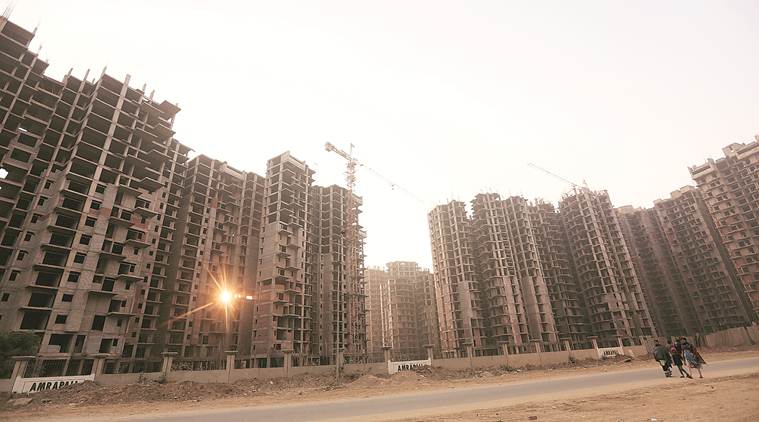
The crisis-ridden Dewan Housing Finance Limited waits for some respite early next week in the form of a payment of around Rs 2,300 crore from US fundhouse Blackstone Group for one of its subsidiaries put on the block. But its downgrade potentially puts at risk borrowings (as of December 2018) to the tune of Rs1 lakh crore, half of which is funded by banks.
The remaining half is financed by insurers, mutual funds, and depositors. Besides a knock-on impact on sectors like real estate, housing and auto which could further dampen the consumption slowdown, the ongoing crisis at DHFL, which has aggravated with its downgrade by credit rating agencies to default status, could overshadow the IL&FS crisis and end up having a broader cascading impact on the financial sector. For one, unlike in the IL&FS case where money borrowed was earmarked for projects, DHFL is a financial sector company that lent for a wide range of purposes, including housing in Tier 2 and Tier 3 cities and consumption. Moreover, other NBFCs may also face regulatory heat.
Sources said DHFL “will repay” the remaining Rs 890 crore of interest dues next week as it expects to receive payments from sale of assets. They added that DHFL has repaid almost Rs 40,000 crore worth of liabilities since September 2018.
Read | UTI Mutual Fund writes off exposure to crisis-hit DHFL
Mutual funds taking a hit on their Net Asset Value (NAVs) over the last two days are, however, not taking any relief from this. UTI Mutual Fund on Friday said it has written off its entire exposure to DHFL securities which has defaulted on repayments.
The funding models of housing finance companies and NBFC loan companies, which have become increasingly reliant on short-term instruments to fund longer-term assets, have been particularly affected by the liquidity squeeze. One reason believed to be the root cause of troubles at DHFL and other NBFCs is their business model. While they borrowed short-term funds through the commercial debt and commercial paper market, they lent long term to home loan borrowers and to the construction sector.
As troubles intensified after default by the IL&FS group last September, it snowballed into problems for NBFCs having significant exposure to the wholesale market. Mutual funds, their key source of funding, have turned extremely risk averse in view of the defaults.
The mutual fund industry’s exposure to DHFL fell sharply from Rs 18,235 crore at September-end 2018 to Rs 6,500 crore at April-end 2019. This reflects that the company is not being able to rollover its debt and is relying on asset sales and securitisation to repay loans.
“Indian NBFIs (Non Banking Financial Institutions) liquidity are sensitive to market sentiment as their business models rely on short-term wholesale funding, which can dry up fast if market sentiment turns negative. Funding models of housing finance companies and NBFI loan companies, which have become increasingly reliant on short-term funding to fund longer-term assets, have been particularly affected by the liquidity squeeze,” Fitch Ratings said in a report Friday.
NBFCs now account for nearly 20 per cent of credit to the economy compared with about 15 per cent five years ago. The funding squeeze has contributed to higher credit costs and a slowdown in loan growth for the NBFCs. DHFL’s outstanding loan portfolio grew at a CAGR of nearly 24 per cent from Rs 40,451 crore as of March 31, 2014 to Rs 61,775 crore as on March 31, 2016 and then at a CAGR of nearly 19 per cent in the following 30 months.
While the RBI stopped short of announcing specific action to help NBFCs, experts say that the potential implosion at DHFL could force policy changes.
So far, securitising — selling loans to banks —- seems to have emerged as a primary solution. While for NBFCs, this move lowers the cost of servicing loans, banks cherrypick assets from NBFCs further aggravating their woes.